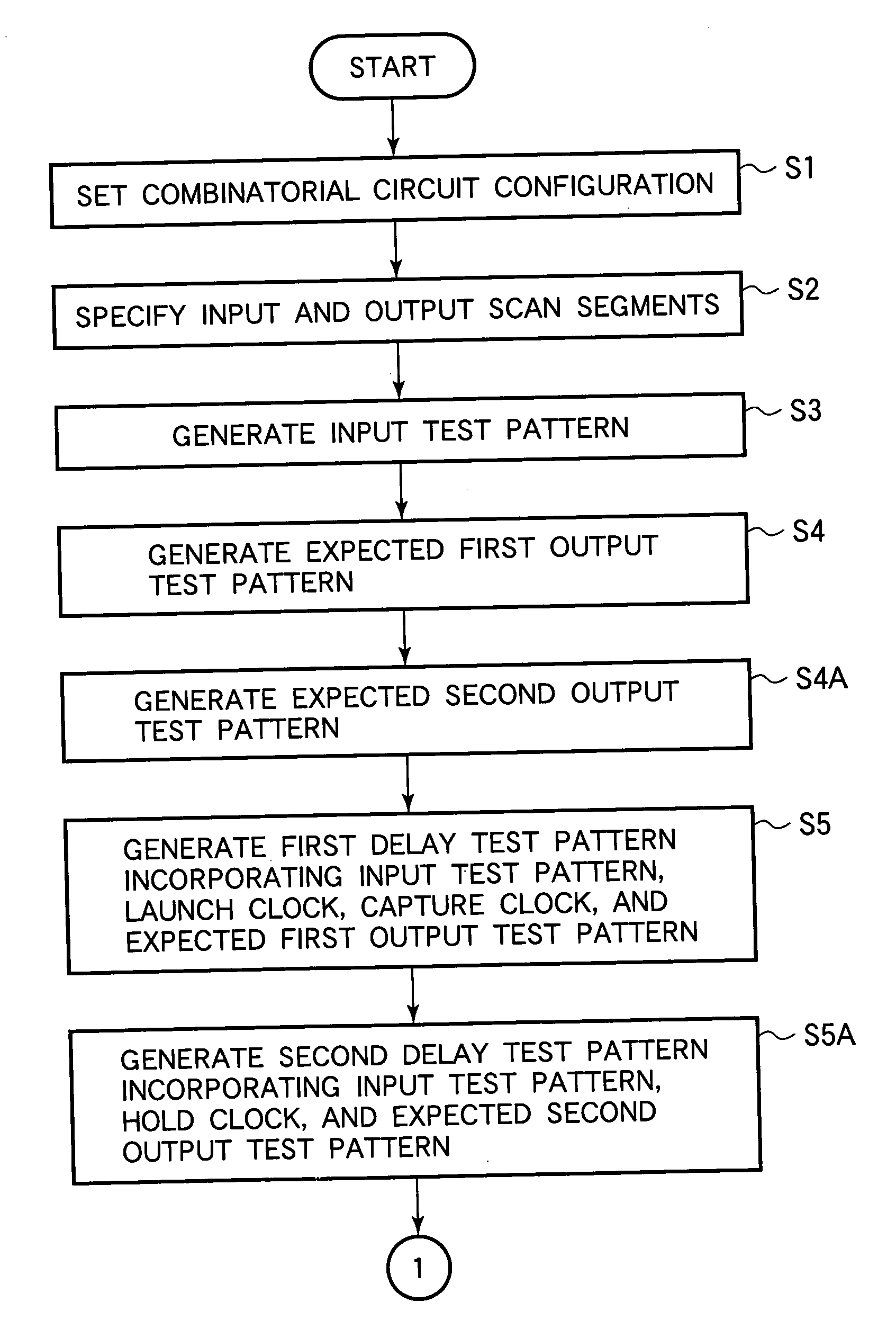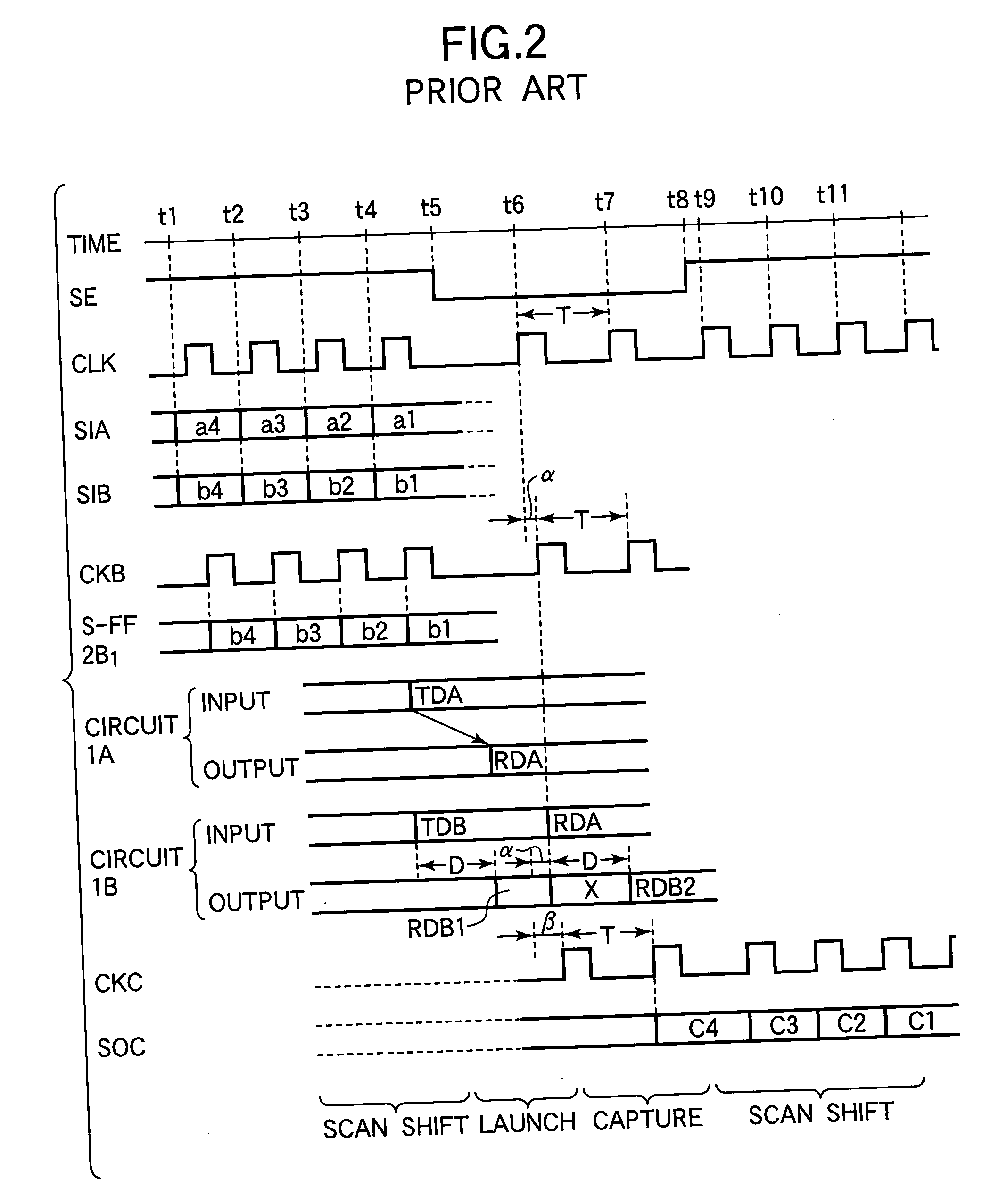Delay test method for large-scale integrated circuits
- Summary
- Abstract
- Description
- Claims
- Application Information
AI Technical Summary
Benefits of technology
Problems solved by technology
Method used
Image
Examples
Embodiment Construction
[0052] An embodiment of the invention will now be described with reference to FIGS. 1-3, 5A, 5B, and 6. The large-scale integrated circuit 30 in this embodiment includes a pre-stage combinatorial circuit 1A as well as the combinatorial circuit 1B to be tested. The scan flip-flops include a pre-stage scan segment (scan chain 2A) that launches signals into the pre-stage combinatorial circuit, an input scan segment (scan chain 2B) that latches signals output from the pre-stage combinatorial circuit and launches signals into the combinatorial circuit under test, and an output scan segment (scan chain 2C) that latches signals output from the combinatorial circuit under test. A predetermined transition of input signals to the combinatorial circuit under test is created by loading an input test pattern into the pre-stage scan segment and the input scan segment, waiting for the signals output by the pre-stage scan segment to propagate through the pre-stage combinatorial circuit, then applyi...
PUM
 Login to View More
Login to View More Abstract
Description
Claims
Application Information
 Login to View More
Login to View More - R&D
- Intellectual Property
- Life Sciences
- Materials
- Tech Scout
- Unparalleled Data Quality
- Higher Quality Content
- 60% Fewer Hallucinations
Browse by: Latest US Patents, China's latest patents, Technical Efficacy Thesaurus, Application Domain, Technology Topic, Popular Technical Reports.
© 2025 PatSnap. All rights reserved.Legal|Privacy policy|Modern Slavery Act Transparency Statement|Sitemap|About US| Contact US: help@patsnap.com



